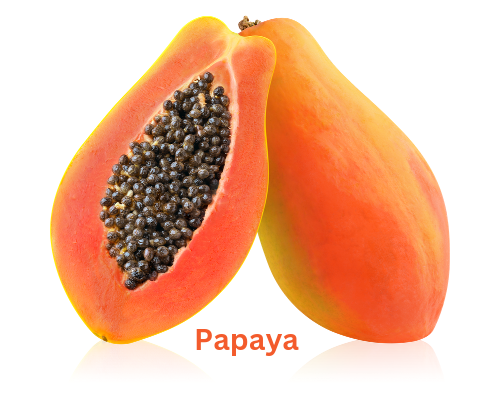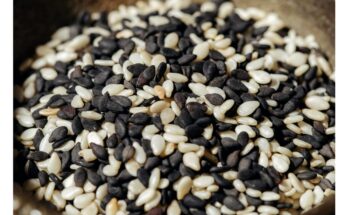Nutritive Value per 100 g of Papaya
Energy (kcal) : 32,
Calcium (mg) : 17,
Iron (mg) : 0.5,
Carotene (µg) : 666,
Vitamin C (mg) : 57,
Papaya is a very wholesome fruit. As a source of vitamin A it is unrivalled by any other fruit except perhaps the mango. With its deep yellow colour, the ripe papaya fruit contains large quantities of a substance called carotene. Carotene in food is converted into vitamin A in our body.
Regular consumption of papaya will ensure a good supply of vitamins A and C which are both essential for good health.
Eating papaya helps to prevent blindness caused by vitamin A deficiency which is quite common among a large number of population. The fruit provides this important vitamin which prevents night blindness. Papaya has more carotene compared to other fruits such as apples, guavas, etc.
Nearly every part of the papaya tree is said to have some medicinal value. This property is mainly due to a substance called Papain, which is present in all parts of the tree and fruit. Papain is an excellent aid to digestion. It is an enzyme which helps to digest the protein in food. Hence it is used in various medicinal preparations.
The fruit is tasty, sweet, deep-yellow coloured and has very little of the typical papaya flavour.
Jams, jellies, marmalades and squashes can be made from papaya. Produced on a large scale, the fruit can be canned and preserved. The fruit blends easily into fruit salads and ice creams.
Raw papaya can be eaten as a vegetable. It however has a large amount of vitamin C and some mineral salts. Traditional systems of medicine consider the green fruit as a mild laxative. Juice from green papaya often appears to be used to cure skin blemishes. (Reference : Fruits, NIN, ICMR).
Benefits and Uses of Papaya
Vitamin A in Papaya
Papaya gets its vitamin A from beta-carotene, a powerful antioxidant found in plants.
Traditional Medicinal Uses
Different parts of the papaya tree have been used in traditional remedies:
Ripe Papaya: May help reduce chronic joint pain.
Unripe Papaya: Acts as a natural laxative or diuretic.
Papaya Juice: Can be applied to warts, corns, tumors, or thickened skin.
Papaya Latex: Used on boils, burns, warts, freckles, and psoriasis. It has antiseptic properties and is sometimes consumed to get rid of worms.
Note: These traditional uses are for reference only. Do not try them without professional advice.
Digestive Benefits
Papain and chymopapain, enzymes in raw papaya, help break down proteins and improve digestion. However, raw papaya should not be eaten uncooked.
Papaya may ease symptoms of irritable bowel syndrome like constipation and bloating.
The dietary fiber in papaya supports regular bowel movements.
Benefits for Eye Health
Beta-carotene in papaya helps protect the cornea (the clear outer part of the eye).
Nutrients like vitamin C, lutein, and zeaxanthin help prevent cataracts and protect against age-related macular degeneration.
Lutein and zeaxanthin provide antioxidant protection to the retina.
Boosting Immunity
Papaya is rich in vitamin C, which strengthens the immune system.
Beta-carotene (vitamin A) in papaya also supports immunity.
How to Safely Consume Papaya
Unripe Papaya: Contains latex, which can be harmful when raw. Always cook it to make it safe to eat.
Ripening Tip: Let unripe papaya sit at room temperature for 2-3 days to reduce its latex content.
Ripe Papaya: Can be eaten raw, baked, stir-fried, or puréed.
Ideas for enjoying papaya: Use it to make jams, smoothies, fruit salads, or desserts.




